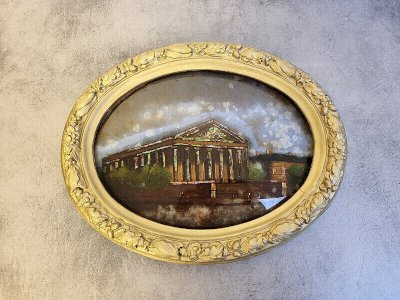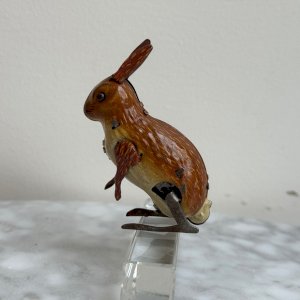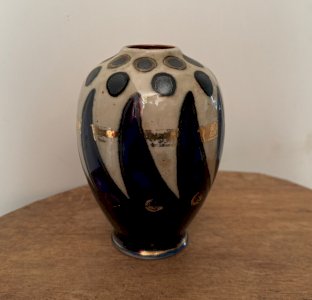- Sell Now
- Home
-
FURNISH
All STORAGE FURNITURE • Wardrobe • Chests of drawers, Chiffonnier • Sideboard • Shelves, Bookshelves • File cabinet • Sewing Furniture • Bar cabinet • TV Stand • Trunk, Chest TABLE & BEDSIDE TABLE • Dinner Table • Coffee table, side table, end table & Bedside • Console, Pedestal table & Selette • Serving Table, Trolley • Card Table • Draper's counter & table SEAT • Sofa • Armchair • Chair • Stool • Bench • Daybed • Beanbag & Footrest • Deckchair & Outdoor DESK, SECRETARY, DRESSING TABLE GARDEN LOUNGE BEDDING • Bed • Bedhead • Cradle, Moses basket CRAFT FURNITURE, WORKSHOP • Workbench • Stool, Ladder, Step • Easel & Trestle SCREEN PIANO
-
DECORATE
All TO PUT • Sculpture, Statuette • Vase & Planter • Dame Jeanne, Bonbonne & Flacon • Bridal globe, Dome • Pin tray, Ashtray • Candlestick & Candle • Photo frame • Stone, Fossil, Mineral • Earth Globe MIRROR WALL DECORATION • Painting • Engraving & Illustration • Poster • Tapestry • Wall Frame • Plate & Sign • Juju Hat & Wall Paniel • Mask • Hunting Trophy • Other object to hang CLOCK, PENDULUM & ALARM CLOCK ARRANGEMENT • Jar, Box & Case • Basket, Wastebasket & Crates • Magazine Rack & Vinyl Holder • Display & Spinner • Coat hook & Coat rack • Furniture Valet & Mannequin • Towel Holder • Suitcase & Travel Bag • Bottle Rack • Umbrella holder BATHROOM OFFICE • Mail holder • Bookends • Sulphide & Paperweight • Stationery FIREPLACE ACCESSORIES HOBBIES • Vintage Sport • Music • Vintage device • Smoking Item • Militaria, Ancient weapon • Miniature Vehicle • Game, Playing Cards • Collection object & Curiosity BIRD CAGE RELIGION, SPIRITUALITY
- TEXTURE
- ILLUMINATE
-
ACCOMODATE
All TABLE & SERVING • Plate • Silverware • Knife Holder • Glass • Bowl, Mug, Cup • Bowl, Ramekin & Cup • Dish, Cup & Salad Bowl • Tray, Basket & Server • Table Mat • Pitcher, Carafe, Bottle, Tea & Coffee Jug • Ice Bucket • Salt & Pepper shakers, Oil & Vinegar shakers • Sugar and jam maker • Gravy boat • Butter dish • Egg cup • Terrine OLD BALANCE CUTTING BOARD GRINDER CASSEROLE, SAUCEPAN & PAN KITCHEN UTENSIL & ACCESSORY
- TINKER
- KIDS
- Jewelry & Accessories
Login
Related Products
Description
FIXED ENGRAVING UNDER GLASS 19TH LIGHTING ON THE PERIOD ATALA AND CHACTAS C2362 This engraving is early 19th. It is a fixed under glass, with an illumination work on the perimeter, everything was done by hand. In golden letters, marked at the bottom: Atala and Chactas surprised by the storm.It is an allegory in the antique.The frame is in gilded plaster also from the early 19th century. You will notice friction and wear on the glass, no breakage on the glass. Several gaps around the perimeter, the engraving has remained fresh. Everything is nature For the state thank you for detailing the photos. This article is taken from the book Larousse "Dictionary of painting". Painting under glass, or "fixed under glass", consists of performing the paint job on the back of a glass plate. One of the difficulties of the process is to paint the inverted motif and, unlike the normal technique, to execute the details (the nose, the eyes, the flowers) before the background (the face, the landscape), the viewer. looking at the finished work on the unpainted side of the glass plate. The craftsman uses oil or gouache colors mixed with a special glue. We call "églomisé" glass the technique which uses gold or silver leaves welded between two films of glass. Widely practiced in Europe, from Spain to Poland, and as far as Asia, painting under glass is linked to the glass industry and its distribution. If the origin dates back to the early days of Christianity on the fringes of stained glass, its real starting point is in Murano, in the lagoon of Venice, a great center of glass art, and its production, significant from the second half of the sixteenth century. s., develops throughout the 17th century. Two groups of paintings are attributed to the Venetian workshops: one with deep blue skies and figures in the foreground against a backdrop of Lombard landscapes, the other using models in fine hatching which evoke the technique of engraving. The religious subjects and taken from the New Testament are inspired by Venetian or Lombard works, then by the school of Caravaggio; although produced in series and intended for a popular clientele, these skilful paintings, with a subtle palette heightened with gold and a skilful design, reflect the spirit of the models they copy. Elements of decorations of religious and mythological inspiration, intended to adorn the drawers and the doors of the cabinets, were produced in parallel. From the 14th to 15th centuries, glassmakers from Murano emigrated to other cities in Italy, in Austria. , in Germany, in France, in the Netherlands. They bring their technique, but find new themes in the works of Dürer, painters from the Fontainebleau school, and Flemish landscape painters. These seventeenth and eighteenth century paintings may have come from workshops in Paris or near the capital. and these precious boxes adorned with fixed under glass whose careful craftsmanship, refinement and themes draw their sources from the paintings of Largillière, Lancret, Boucher, Chardin, Greuze, Hubert Robert, Vernet, Boilly. It is not impossible that some of them are the work of Provençal workshops (the Cantini museum, in Marseille, has a large collection). In fact, the history of this trend of painting under glass, very clearly inspired by large painting, remains to be done. We only know that it was also practiced in England, Spain and China, imported by Westerners. North Bohemia manufactured in series, to supplement their salaries, for the pilgrims who went to the famous sanctuaries of Austria, Moravia, Poland. Coming from Italy via Tyrol and Bavaria c. 1770, the technique flourished there until c. 1880. Unlike Italian glass paintings, the fixtures from Central Europe are inspired by ancient images of pilgrimages, reproduce familiar and local saints, popular heroes, and traditional dances. It is a regional, folkloric art, seductive by its popular charm and the liveliness of its colors, and which established itself in Alsace in the second half of the 18th century. In addition to religious subjects, there are secular subjects: portraits of famous people, allegories. Less vivid in color than in Alsace, the ex-votos under glass from the sanctuary of Notre-Dame de Laghet, near Nice, seem to come from a local workshop. little practice painting under glass. An exception, however, among the painters of the Blaue Reiter, who, experimenting before 1914 with artisanal techniques, tried their hand at this kind of painting, no doubt attracted by the brilliance given to the colors by the glass plate: Jawlensky, Macke, Gabriele Münter , Kandinsky especially, in this experimental phase of his work which precedes the discovery of Abstraction, and Campendonck. In Belgium, Floris Jespers painted quite a few paintings under glass and, in France, Marcoussis, after the war.The photos are an integral part of the description.Dimensions: FrameHeight: 51.5 cmcmWidth: 58.7 cmEngravingHeight: 24, 5 cm Width: 33.5 cm I remain at your disposal for any questions.
Réf :
#17615
Color(s) : Golden
Comments
Related Products
Description
FIXED ENGRAVING UNDER GLASS 19TH LIGHTING ON THE PERIOD ATALA AND CHACTAS C2362 This engraving is early 19th. It is a fixed under glass, with an illumination work on the perimeter, everything was done by hand. In golden letters, marked at the bottom: Atala and Chactas surprised by the storm.It is an allegory in the antique.The frame is in gilded plaster also from the early 19th century. You will notice friction and wear on the glass, no breakage on the glass. Several gaps around the perimeter, the engraving has remained fresh. Everything is nature For the state thank you for detailing the photos. This article is taken from the book Larousse "Dictionary of painting". Painting under glass, or "fixed under glass", consists of performing the paint job on the back of a glass plate. One of the difficulties of the process is to paint the inverted motif and, unlike the normal technique, to execute the details (the nose, the eyes, the flowers) before the background (the face, the landscape), the viewer. looking at the finished work on the unpainted side of the glass plate. The craftsman uses oil or gouache colors mixed with a special glue. We call "églomisé" glass the technique which uses gold or silver leaves welded between two films of glass. Widely practiced in Europe, from Spain to Poland, and as far as Asia, painting under glass is linked to the glass industry and its distribution. If the origin dates back to the early days of Christianity on the fringes of stained glass, its real starting point is in Murano, in the lagoon of Venice, a great center of glass art, and its production, significant from the second half of the sixteenth century. s., develops throughout the 17th century. Two groups of paintings are attributed to the Venetian workshops: one with deep blue skies and figures in the foreground against a backdrop of Lombard landscapes, the other using models in fine hatching which evoke the technique of engraving. The religious subjects and taken from the New Testament are inspired by Venetian or Lombard works, then by the school of Caravaggio; although produced in series and intended for a popular clientele, these skilful paintings, with a subtle palette heightened with gold and a skilful design, reflect the spirit of the models they copy. Elements of decorations of religious and mythological inspiration, intended to adorn the drawers and the doors of the cabinets, were produced in parallel. From the 14th to 15th centuries, glassmakers from Murano emigrated to other cities in Italy, in Austria. , in Germany, in France, in the Netherlands. They bring their technique, but find new themes in the works of Dürer, painters from the Fontainebleau school, and Flemish landscape painters. These seventeenth and eighteenth century paintings may have come from workshops in Paris or near the capital. and these precious boxes adorned with fixed under glass whose careful craftsmanship, refinement and themes draw their sources from the paintings of Largillière, Lancret, Boucher, Chardin, Greuze, Hubert Robert, Vernet, Boilly. It is not impossible that some of them are the work of Provençal workshops (the Cantini museum, in Marseille, has a large collection). In fact, the history of this trend of painting under glass, very clearly inspired by large painting, remains to be done. We only know that it was also practiced in England, Spain and China, imported by Westerners. North Bohemia manufactured in series, to supplement their salaries, for the pilgrims who went to the famous sanctuaries of Austria, Moravia, Poland. Coming from Italy via Tyrol and Bavaria c. 1770, the technique flourished there until c. 1880. Unlike Italian glass paintings, the fixtures from Central Europe are inspired by ancient images of pilgrimages, reproduce familiar and local saints, popular heroes, and traditional dances. It is a regional, folkloric art, seductive by its popular charm and the liveliness of its colors, and which established itself in Alsace in the second half of the 18th century. In addition to religious subjects, there are secular subjects: portraits of famous people, allegories. Less vivid in color than in Alsace, the ex-votos under glass from the sanctuary of Notre-Dame de Laghet, near Nice, seem to come from a local workshop. little practice painting under glass. An exception, however, among the painters of the Blaue Reiter, who, experimenting before 1914 with artisanal techniques, tried their hand at this kind of painting, no doubt attracted by the brilliance given to the colors by the glass plate: Jawlensky, Macke, Gabriele Münter , Kandinsky especially, in this experimental phase of his work which precedes the discovery of Abstraction, and Campendonck. In Belgium, Floris Jespers painted quite a few paintings under glass and, in France, Marcoussis, after the war.The photos are an integral part of the description.Dimensions: FrameHeight: 51.5 cmcmWidth: 58.7 cmEngravingHeight: 24, 5 cm Width: 33.5 cm I remain at your disposal for any questions.
Réf :
#17615
Color(s) : Golden
 English
English  Français
Français 


























